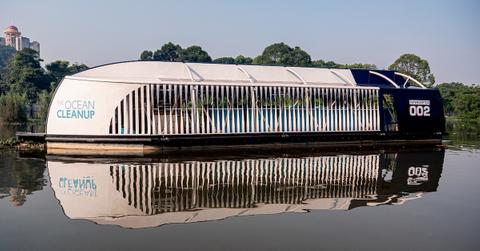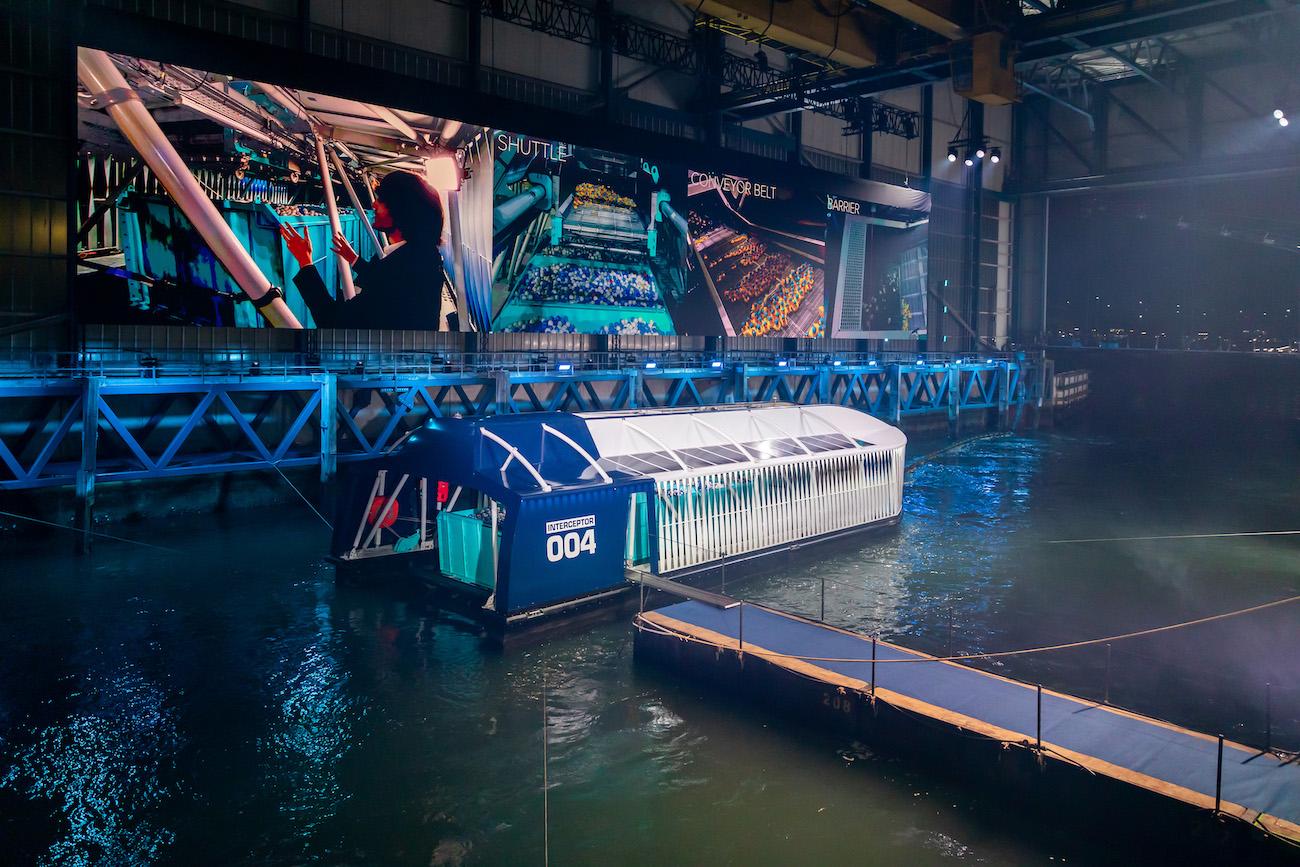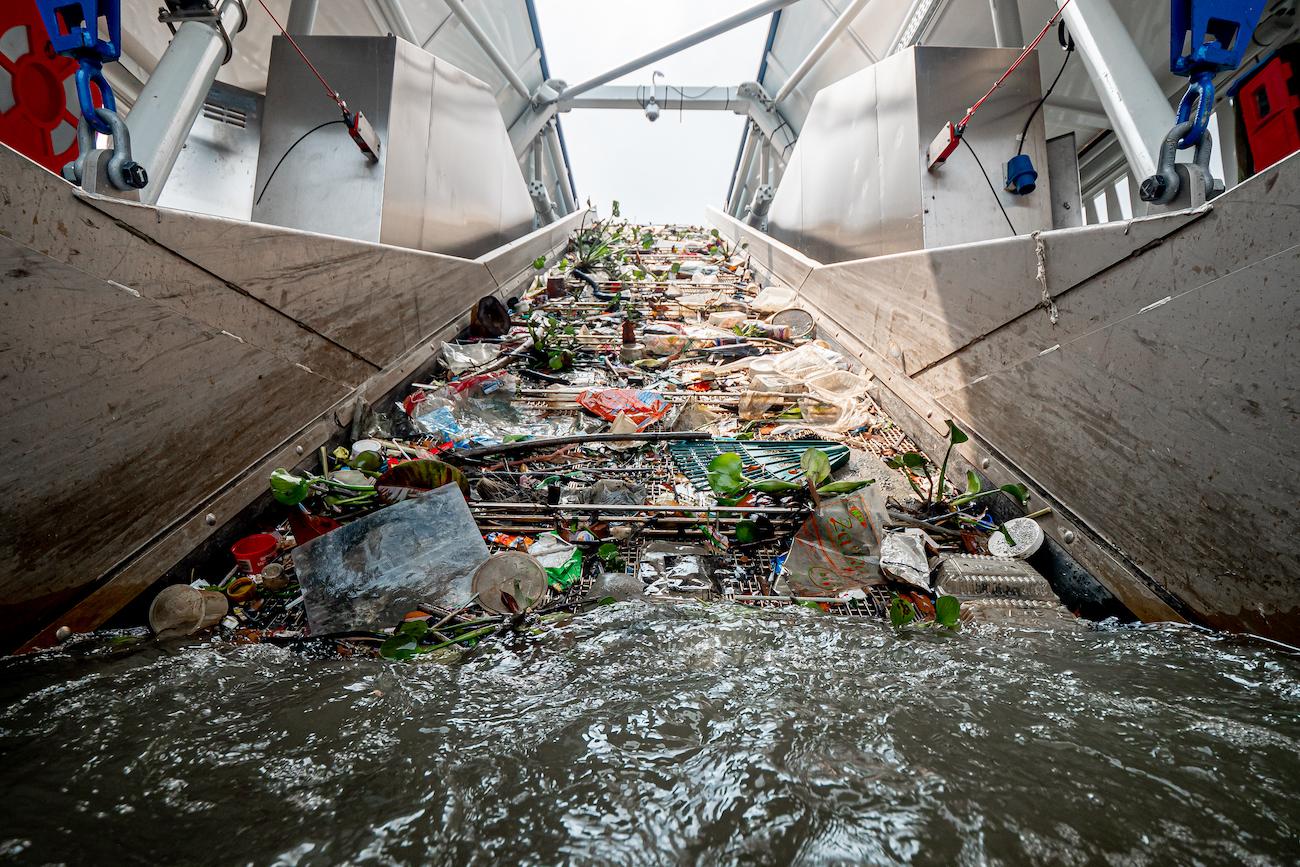The Ocean Cleanup Is Now Cleaning Up Rivers With the "Interceptor"
The "Interceptor" is the latest from The Ocean Cleanup.
Updated Oct. 21 2021, 10:32 a.m. ET

Each day, an estimated 8 million pieces of plastic enter the world's oceans. Interestingly, one of the main ways trash physically travels from land into the ocean is via rivers — in fact, The Ocean Cleanup CEO Boyan Slat calls rivers “the arteries that carry waste from land to the ocean."
So for that reason, The Ocean Cleanup is working to remove debris from our globe's rivers before it can actually get to the ocean and harm underwater creatures. This weekend, Slat revealed his organization's new innovation: The "Interceptor."
Slat, 25, unveiled the "Interceptor" at a glitzy launch event on a river in Rotterdam, the Netherlands on Saturday night, Oct. 26, according to the AP. The company built a stage on the water, so that the audience could actually see the Intercepter, which is the first "scalable solution" to this issue, according to The Ocean Cleanup.

As explained on The Ocean Cleanup's website, rivers are the primary source of ocean pollution — based on the company's research, the organization estimates that about 1,000 rivers are responsible for 80 percent of global ocean plastic pollution. For that reason, the Interceptor was created to divert plastic from rivers, which will prevent it from getting into oceans.
Here's how the Interceptor works, as Slat explained at the unveil event. The Interceptor is designed like a catamaran, meaning water passes through the center. The current of the water moves plastic onto a netted conveyer belt, which water filters through and back into the river, and plastic goes from the conveyer belt and into the shuttle. The shuttle then pours the waste into six on-board dumpsters, which have a capacity of 50 cubic meters of trash, with the ability to eventually collect between 50,000 kg and 100,000 kg of trash per day.
The Interceptor runs automatically, without needing any operators on the barge itself. But once the dumpsters are nearly at capacity, an automated text message is sent to the operators, who then collect the barge, empty the dumpsters, and then return the barge back to the Interceptor to continue picking up debris. In a YouTube explainer video, The Ocean Cleanup says that waste collected will be recycled, but it's unclear what method will be used to sort waste — and, more importantly, how The Ocean Cleanup plans to prevent the trash from returning to the water.
Slat made sure to keep the Interceptor as low-impact as possible. The Interceptor is solar-powered, equipped with lithium-ion batteries, free of exhaust fumes, quiet, and it can run autonomously 24/7. Additionally, the Interceptor does not impede other boats, and it does not harm or disrupt wildlife, the organization claims.

And this isn't one of those projects that gets people excited at first, and then disappointed when it's revealed that things won't be up and running for years. In fact, the company has already built four Interceptors, two of which are being used in Jakarta, Indonesia and Klang, Malaysia. The other two will be installed in the Mekong Delta, Vietnam, and Santo Domingo, Dominican Republic. Plus, two are in the works to be installed in rivers in Bangkok, Thailand, and Los Angeles.
“To truly rid the oceans of plastic, we need to both clean up the legacy and close the tap, preventing more plastic from reaching the oceans in the first place," Slat said in a statement. "Combining our ocean cleanup technology with the Interceptor, the solutions now exist to address both sides of the equation." The organization has a goal of installing an Interceptor in 1,000 of the world's most polluting rivers by 2025, which would make a massive difference in protecting our oceans.